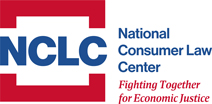August 8, 2016
Presenters: Cheryl A. Leanza (A Learned Hand Consulting), Andy Lomeli (National Hispanic Media Coalition), Olivia Wein (National Consumer Law Center)
The low-income Lifeline telephone assistance program has been increasing the affordability of telephone service since the Reagan and Bush administrations. Starting at the end of 2016, the Obama Administration has modernized the program to support the affordability of broadband service.
The need for broadband access is greater than ever to access opportunity and education, yet there is a digital divide for low- income, African American and Hispanic households. In recent years there has been a drop in home broadband service for African Americans households (54%), Hispanic households (50%) and low-income households (41%), and the trend is to rely more on mobile devices for internet access even though those devices are often inferior for critical needs such as homework or applying for employment. For example one in seven teachers assigns homework requiring the internet, thus the broadband gap is a “homework gap.”
